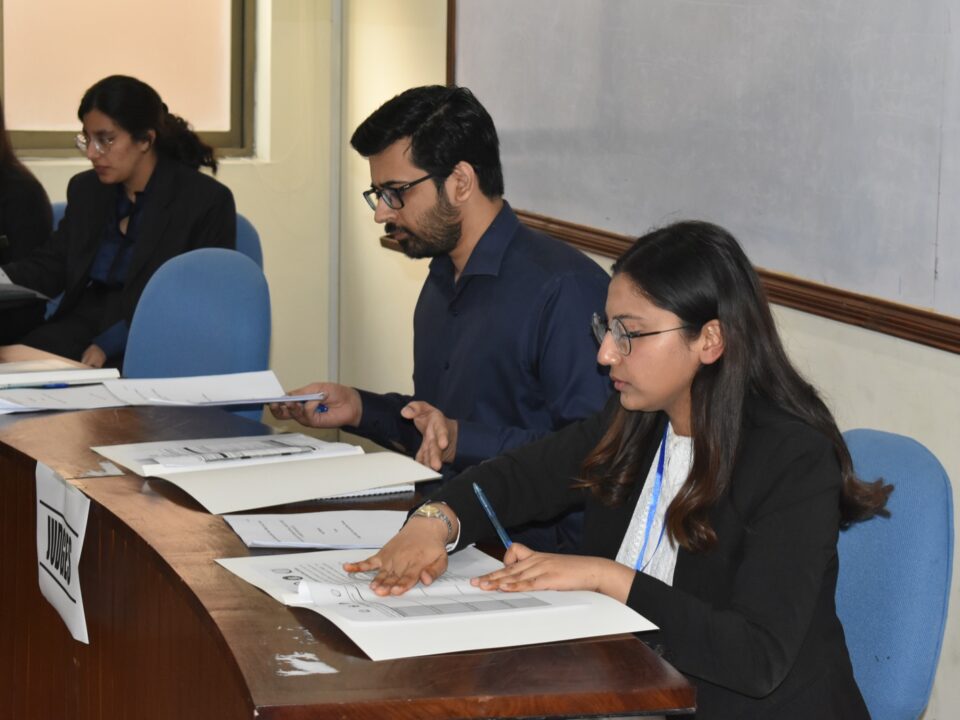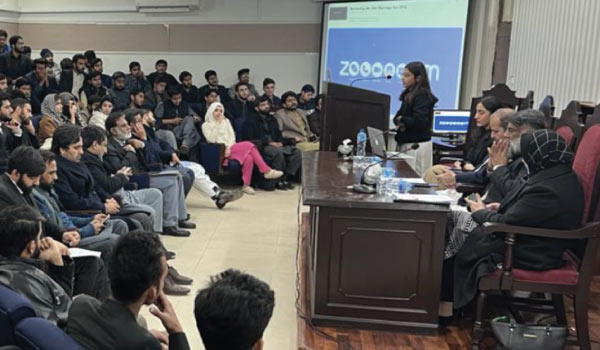ARTICLES
Sexual Violence During Armed Conflicts: An Inevitable Reality?
WRITTEN BY
Shafaq Farooq
DATE
11 September 2020

Despite being an act of shame, sexual atrocities against women have existed for a quite long time. It is not a new phenomenon but mostly it is misunderstood that sexual violence include rape only. However, the term garners several other crimes such as forced prostitution, unwilled pregnancy, sexual humiliation and mutilation as well. The history is evident of instances of sexual violence when during the World Wars, in early 1920’s sexual violence was considered as an inevitable, albeit grievous reality of armed conflicts. Undoubtedly, until 1940’s the believed myth was upheld strongly. Women could not talk about rape, molestation and sex crimes and taking redress for themselves, was sadly never an available option for them. After having a glance over the facts, it is safe to say that the international community has majorly failed at restraining or putting a stop to sexual harassment and other atrocities especially against women, and men too during armed conflicts for hulking years. It was only in 1990’s when a considerable stand was taken for the very first time against activities regarding to sexual violence.
In 1992, during conflicts in Former Yugoslavia special detention camps were formed especially for the purpose of raping women. The reports telecasted by several media houses highlighted the indurate act, and then finally the issue emerged as a serious global agenda for the international community at large. Also, in 1992, the Japanese Government apologized for compelling women into sexual slavery during second world war. In 1993, the United Nations Security Council in exercise of its powers given under Chapter VII of the UN Charter established an ad hoc wartime tribunal in Yugoslavia (ICTY) to prosecute alleged criminals for committing violations of International Humanitarian Law during the conflicts in former Yugoslavia. The Statute of International Criminal Tribunal of Yugoslavia in article 5(g) declared rape as a crime against humanity. Moreover, in Prosecutor v Dragoljub Kunarac case (2002), ICTY for the first time declared a person guilty of rape, as a crime against humanity and while defining rape broadened its definition by adding sexual slavery to it. Post the World War II, two multinational war-crime tribunals were established in Tokyo and Nuremberg to prosecute criminals for committing sex crimes. Furthermore, as a result of an ongoing conflict in Rwanda, under United Nations Security Council Resolution 955, adopted by Security Council on 8th November 1994, International Criminal Court for Rwanda (ICTR) was established to punish criminals for rape, molestation and other sexual violations. The Statute of Rwanda in its article 4 enumerated crimes against humanity and it expressly stated rape to be included in such crimes. In a famously important case, Prosecutor v Jean Paul it was held that rape does not only comprise a crime against humanity but also could constitute genocide if it is committed with an intent to destroy a particular race.
Multiple definitions of rape have been given in different cases of tribunals/ courts. The ICTR in Prosecutor v Akayesu case defined rape as a physical invasion which is sexual in nature and takes place in coercive circumstances. Several months later, the trial court in Prosecutor v Sylvestre Gacumbitsi case established rape occurs when there is lack of consent on the part of an individual with whom sexual intercourse is performed. Moreover, the same element of lack of consent was further explained in Prosecutor v Kajelijeli case (2003) and a precedent was set which stated that presence of mens rea to indulge in sexual violence without consent is what amounts to rape.
As discussed, it was late 1990’s and the beginning of 20th century when legally through legislation rape was declared as a war crime or crime against humanity. The Lieber Code of 1863, was the 1st proper legislation which in its article 44 prohibited rape in a wartime. Next to it was the Hague Convention of 1899 and 1907 which did not provide any specific clause for rape and sexual violence. However, the ‘Martens Clause’ did say that women and families honor should be protected during an armed conflict. Following this was the London Charter (1942) which in its article 6 provided Nuremberg Tribunals the jurisdiction to prosecute crimes involving sexual violations. In addition to the Nuremberg trials, a special tribunal was also set in Tokyo. Article 5(b) of the International Military Tribunal for Far East (IMTFE) Charter provided Tokyo Tribunal the jurisdiction to resolve cases of sex crimes. Then later in 1949, conclusively four Geneva Conventions and their three Additional Protocols were adopted which in its article 3 outlawed violation to life, degrading and humiliating treatments. The article 76(1) of the Convention further provided protection to children and women during atrocious hostilities of war. Also, the Rome Statute which came in force in 2002, in its article 6 recognized rape as a crime. Article 7 of the same Statue considers sexual violence during conflicts a crime against humanity. Lastly, article 8 of the Rome Statute marks rape as war crime during an armed conflict.
The role of the United Nations Security Council for defeating the culture of sexual atrocities against women has been commendable. United Nations Security Council has not only focused deliberately on punishments of sexual criminals but also in 2000, United Nations Security Council Resolution No. 1325 emphasized on the drastic after effects of rape and other sexual crimes in regard to women. Most importantly, it has worked for providing protection to females against rape, assault, harassment and spreading deterrence for limiting acts of sexual violence. Other international instruments and legislation include Declaration on Elimination of Violence against Women (1993), the Special Rapporteur on Violence against Women appointed by Commission on Human Rights in 1994, the Rapporteur on rape, sexual slavery and other similar practices during armed conflicts and Fourth World Conference on Women which collectively accentuated on the utmost need of providing women protection against sexual brutalities and prohibited the actions of violence.
Conclusively, problems exist within the law of armed conflicts which proscribe sexual violence against women. For example, the Geneva Convention of 1949 and Additional Protocol I, classify some crimes as ‘grave breaches’ depending on the severity and horrific nature of crimes. Strangely, rape and other sexual crimes are not classified as grave breaches which generate debate of no effectiveness and poor credibility of the Convention and Additional Protocol as well. Moreover, the Convention has associated sexual violence with the ‘honor and dignity’ of women and does not discuss it with reference to male, as sexual violence can occur against any gender. Also, in the Charter of Nuremberg and Tokyo, no reference to sexual violence has been made considering that on the basis of the Charter, the tribunals work. Therefore, the International Law through various Conventions and Declarations prohibits rape and other forms of sexual violence against women during armed conflicts. However, there are certain back draws which limits the application of international legislation and sadly, still today on a small-scale women face assault, molestation and other sexual crimes during conflicts in the world.
Table of Authorities
Cases
Prosecutor v. Akayesu [1998] 96-4-T (ICTR)
Prosecutor v. Jean-Paul Akayesu [2001] 96-4-A (ICTR)
Prosecutor v. Dragoljub Kunarac [2002] IT-96-23 (ICTY)
Prosecutor v. Juvénal Kajelije [2003] 98-44A-T (ICTR)
Prosecutor v. Sylvestre Gacumbitsi [2004] 2001-64-T (ICTR)
Statutes
Statute of International Criminal Tribunal of Yugoslavia, 1991
Statute of the International Tribunal for Rwanda, 1994
Rome Statute, 2002
Bibliography
International Instruments
Lieber Code, 1863
First Geneva Convention, 1864
Hague Convention, 1907
London Charter, 1942
Second Geneva Convention, 1949
Declaration on Elimination of Violence against Women, 1993
United Nations Security Council Resolution No. 955, 1994
Journal Articles
Michaele Smith, “Rape Law in the Mid-Twentieth Century: Sexual Violence in Salt Lake City” (Harvard Journal of Law and Technology, Vol 35, 2017) Angella Son, “The Japanese Secret: The Shame Behind Japan’s Longstanding Denial of Its War Crime against Korean Girls-Women” (Oxford University Press, 2020)Yuma Totani, “The Tokyo War Crimes Trial: The Pursuit of Justice in the Wake of World War II” (Jstor, 2008)
Rupert Ticehurst, “The Martens Clause and the Laws of Armed Conflict” (ICRC, 1997)
Donna Sullivan, “Women’s Human Rights and the 1993 World Conference on Human Rights” (The American Journal of International Law, 1994)
Research Reports
Fraciah Muringi Njoroge, “Evolution of Rape as a War Crime and a Crime Against Humanity” (SSRN, 2016)
Patricia Viseur Sellers, “The Prosecution of Sexual Violence in Conflict: The Importance of Human Rights as Means of Interpretation” (Office for High Commissioner for Human Rights Guide, 2013)
Radhika Coomaraswamy, “A Global Study on the Implementation of UN Security Council Resolution 1325” (United Nations Women, 2015)
Newspaper Articles
Ehlimana Memisevic, “Visegrad’s rape camps: Denial and erasure” (Aljazeera, 17 October 2020)
Websites
ICRC, “IHL Databases” https://casebook.icrc.org/highlight/sexual-violence-armed-conflict



